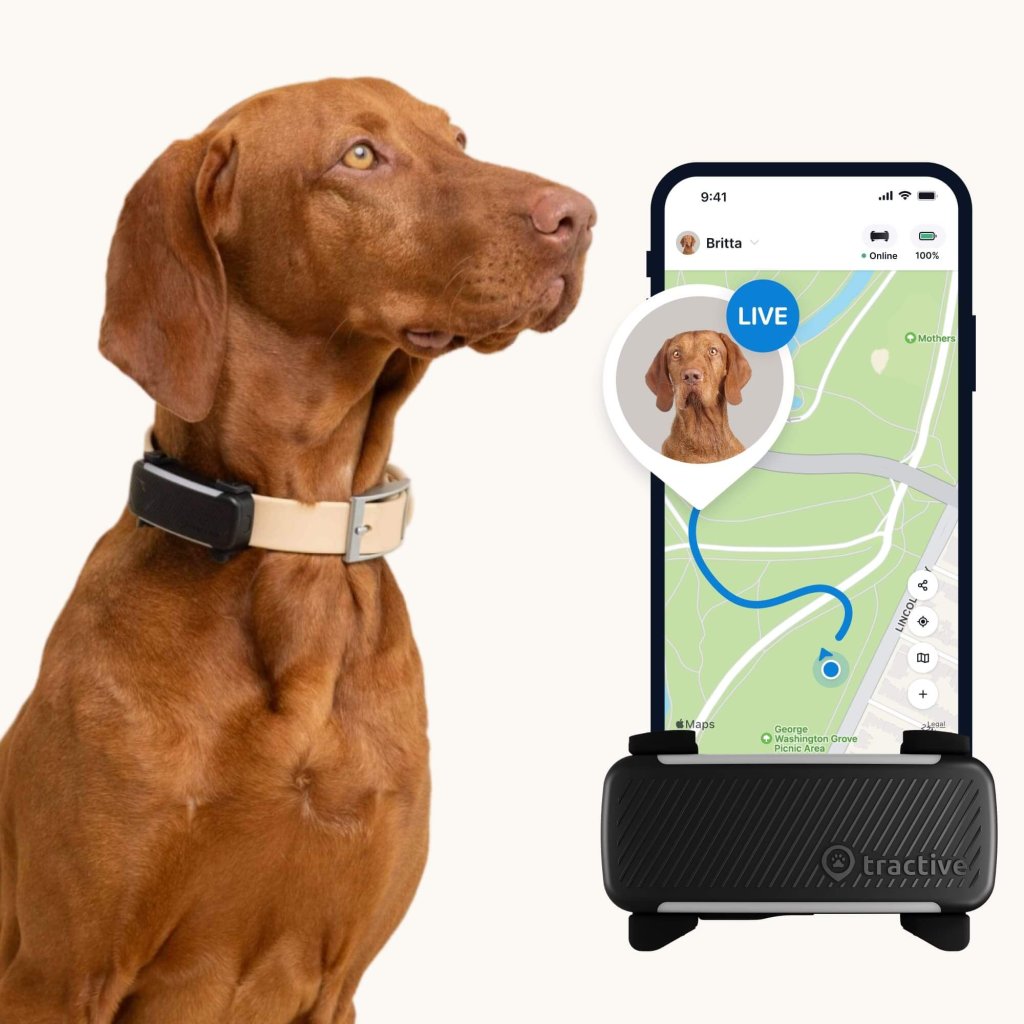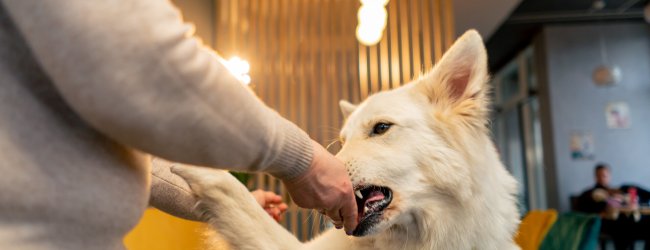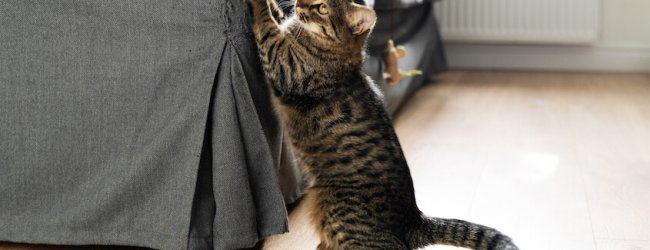How To Tire Out A Puppy – And Keep Them Safe
A tired puppy is a happy puppy and with a few of these tips & tricks, you'll be on your way to keeping your little buddy healthy and safe - all in one.
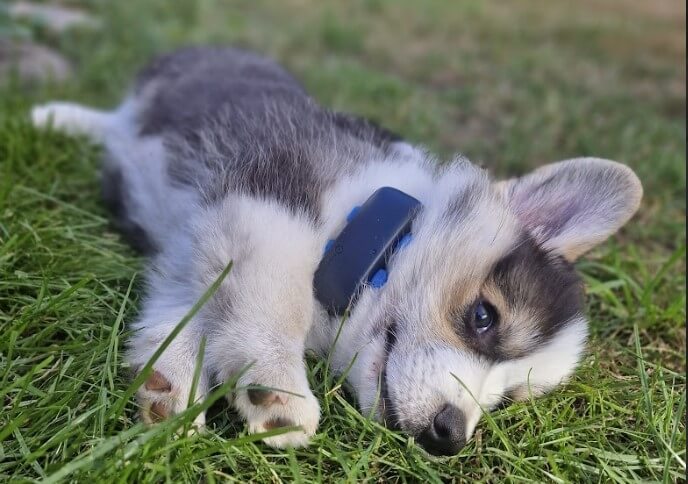
If you’ve found yourself surrounded by a pile of dog toys, wondering “How to tire out a puppy?”, you’re part of a big family of loving dog parents out there asking themselves the same question. Here’s why your little buddy is so hyper, when they start to calm down, and how to tire out a puppy best. Plus, how you can take a more active role in your puppy’s health and safety by following their every step.

Always know your buddy is healthy & safe
Read moreWhy is my puppy so hyper?
For such tiny furballs, it’s pretty fascinating how puppies are so full of energy! So here are a couple of reasons why your puppy tends to be so hyper.
- They’re growing
Between birth to around 8 weeks (or 2 months), your puppy is growing and learning to explore the world around them with their newer, stronger little legs. Just like human toddlers, they now have the speed and energy to just run around everywhere and burn off tons of energy. - Your puppy’s senses are improving
Puppies are born deaf and blind. It’s only with their sense of smell that they can navigate the world. So as your puppy grows, their sense of smell gets almost 100,000 times better than when they were first born. No wonder they’re so curious and hyper! - How much you’re socializing your puppy
Make sure they’re spending enough time around other puppies, people, and pets. This can help them learn how to behave – and how not to. In fact, puppies that don’t get to socialize may turn out to be more hyperactive than ones that do. Roughhousing and playing with other dogs means that they learn puppy “etiquette” better.
When do puppies start to calm down?
It can take up to 1-2 years for your puppy to calm down and behave a little more. This has to do with how they grow and develop month over month.
- Between 2-4 months
Your puppy is now in the “teenage” phase. So they’re still more curious and excitable and ready to bolt off at any minute. This is a great time to begin some basic obedience training to curb their rambunctiousness a bit. - Between 4-6 months
Your puppy will begin play-fighting with you, other pups, and even bigger dogs. (All in good fun, of course.) Make sure to provide them enough opportunities to socialize and learn their boundaries early on. - Between 6-12 months
Your puppy now counts as a semi-adult. Here’s where their exercise needs peak – you’ll need to keep them occupied as much as possible to prevent boredom. - By 1-2 years
Most puppies reach “adulthood” around this time. They’re able to better self-regulate and understand their size and strength.
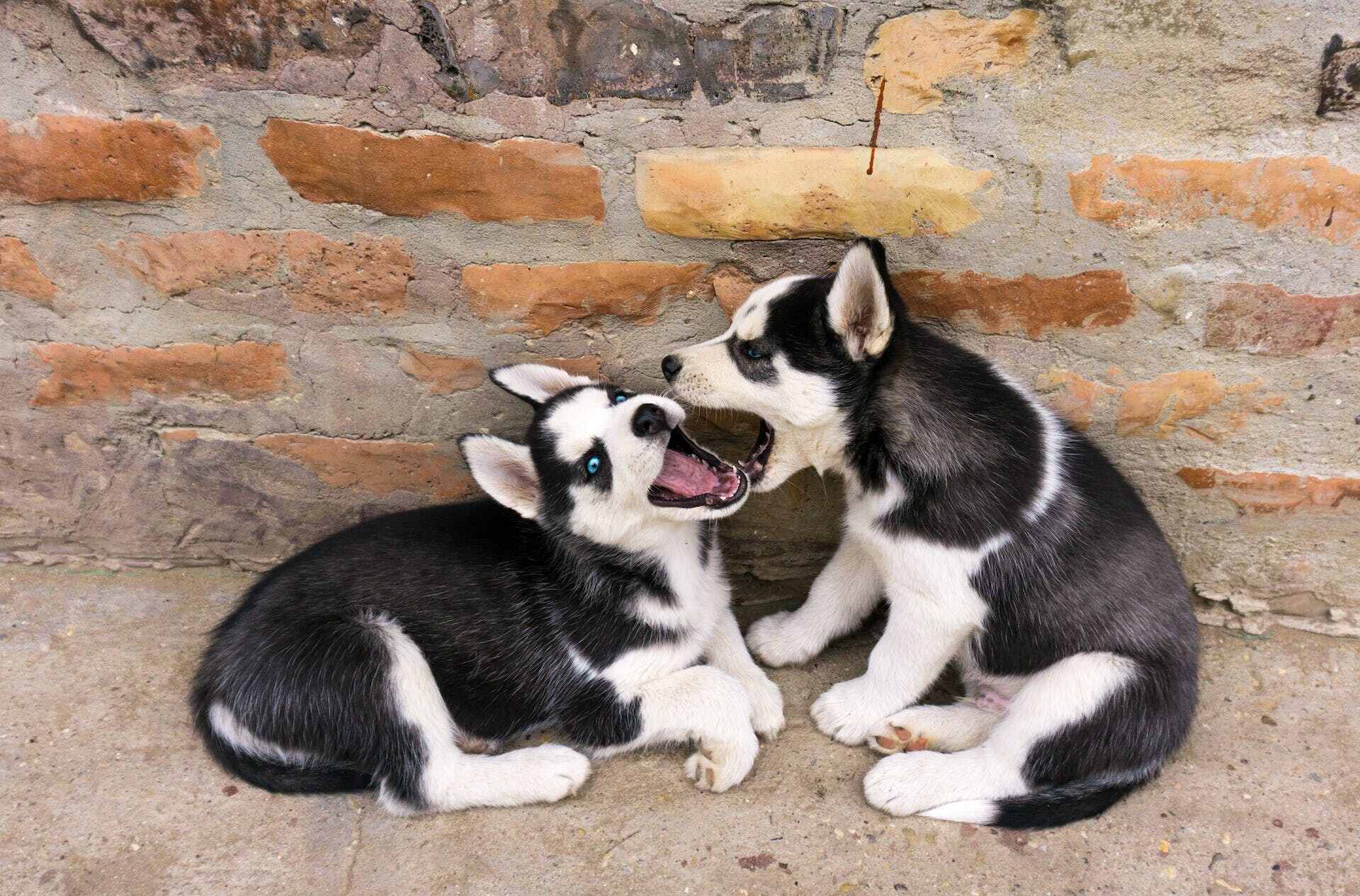
💡A dog GPS tracker can help you keep an eye on your puppy – no matter where they’re roaming, how far they get, or how active they are. With just a glance at your phone, you’ll be able to track them in real-time and intercept them right away, if they bolt the leash or take off all of a sudden.
How to tire out a puppy – indoors & outdoors
Outdoor games in your backyard
- A homemade obstacle course, using blankets, pillows, cushions, stuffed toys, and other props. (A great intro to agility training!)
- Football, using a rolled up pair of socks, old clothes, or a soft material.
- Chase bubbles around. Mix some soap and blow them around your backyard and watch your little buddy go nuts chasing them!
- A scavenger hunt, where you hide your puppy’s favorite toy and get them to sniff it out. (Also a great way to help them develop their sense of smell.)
- Create a digging box to keep your puppy away from your flowers or other plants. Puppies love to dig and hide their “treasures” – and even better so if they can do so safely and without messing up the rest of your garden.
Indoor games for a rainy day
If you’re wondering how to tire out a puppy when heading outdoors isn’t an option, we’ve got you covered. Plus, many outdoor games are also safe to play indoors – just mind your ceiling lights or furniture!
- Tug of war with a string of used clothes, rope, or any other pullable material you can find. Perfect for when your puppy is teething and can’t wait to bite everything they see.
- Use a flirt pole. Attach a string to the end of a pole (or a broomstick). Tie a pair of your puppy’s favorite socks or one of your shirts to the string. Dangle it in front of them and watch them lunge for it every time!
- Hide and seek, which can help your puppy develop their sense of smell and hearing.
- Magic cups, where you hide a treat or toy under a bunch of plastic cups. Shuffle them around and let your puppy guess where it is! Otherwise, you could play the same game with just your hands and a smaller object (like a quarter.)
- Indoor obstacle course. Set up pillows, cushions, or other moveable props in an obstacle course and get your puppy to run through them!
- Puzzle toys, including food dispensers that make your puppy have to solve a simple pattern or puzzle to “earn” their food. A great way to keep your little buddy mentally active too.
Puppy playdates
Set up a time with friends or family to bring their pets over and to have them play together indoors or outdoors (like in your backyard.) It’s a win-win either way, since you get to spend time with your loved ones – and your puppy gets to learn how to better behave in pet society.
You could also reach out to fellow pet parents via social media – you and your puppy both might just make some lifelong new friends! Just make sure your friends and family bring over pets who have been vaccinated themselves and aren’t sick at the time.
Regular outdoor walks
Wondering how to tire out a puppy once they’ve (finally) gotten their shots? Start with short outdoor walks to help them build up strength gradually. Even a 10-15 minute walk around your block can help them benefit from the exercise and sensory stimulation of the outdoors. Keep your puppy indoors too long and they’ll end up getting bored, stressed, or even anxious – and might “act out” by peeing around the house or barking non-stop.
Puppy parks (or other dog-friendly spaces near you)
Once your little buddy slowly gets used to the outdoors, look for a puppy park or a nearby dog-friendly green space. Remember to take it slow and allow your puppy to get to know the other dogs at their own pace. Expect a ton of butt sniffing, mounting, and even play fighting – and remember: it’s all 100% normal and healthy.
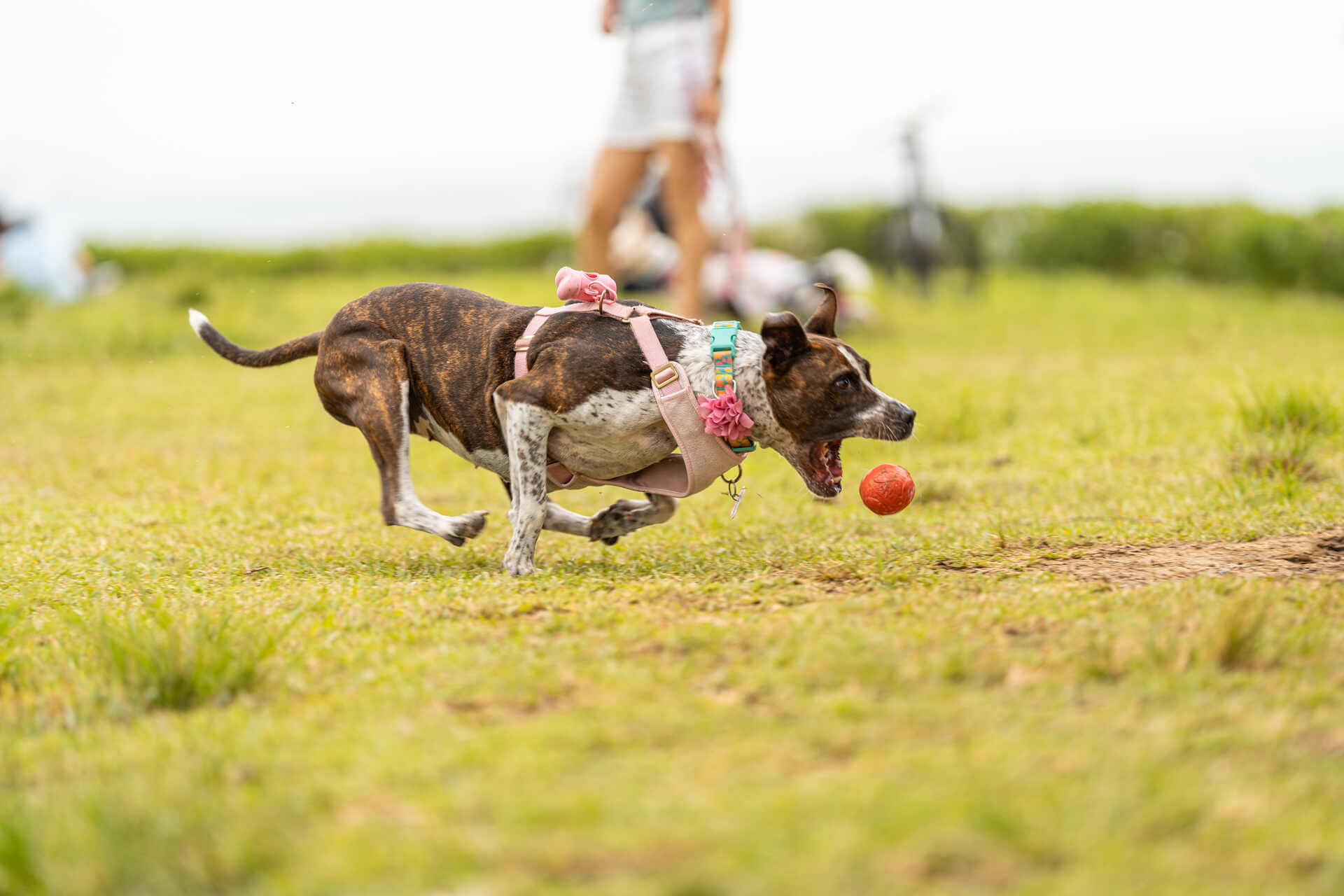
How to tire out a puppy – with regular training
In general, vets recommend training your puppy once they reach around 8 weeks. It’s a great way to keep them physically and mentally active, socialize them, and also teach them some new tricks – all in one go. Like, for example:
Collar or harness training
Vets recommend gently guiding your puppy to wear a collar or harness around 7-8 weeks. Remember: puppies aren’t born wearing collars, so initially, yours might resist or just find it weird. But collar training is an important part of their socialization. (And with an ID tag, you’re more likely to keep yours safe if they run away.)
So make sure you pick the right type of dog collar or harness for your little buddy. Ideally, a regular flat collar you can fit two thumbs comfortably inside to ensure it secures against your puppy’s neck.
Leash training
Much like a collar, walking your puppy on a leash can help prevent an escape attempt outdoors. Start with a loose leash and train your little buddy with basic commands like sit, stay, and heel. And if your puppy resists at any point, pause for that day – and pick it again the next day.
Read more: The complete guide to leash training a puppy or a dog
Basic obedience training
Younger, untrained dogs are more likely to run away. But by teaching your puppy commands like come, sit, heel, and stay can help override their chasing instincts to an extent. Just remember to:
- Start in a quiet, familiar environment. (So you don’t stress your puppy out.)
- Go slow. Focus on teaching your puppy one command at a time.
- Be consistent. When your puppy sits at the command “Sit”, make sure to reward them just a second after.
- Pick your “rewards” carefully. You don’t necessarily always need treats to reward your puppy. Praises, pats, and extra playtime can be rewarding enough. (You want to ensure that your puppy isn’t overeating treats.)
Tricks
Teaching your little buddy tricks is a great way to keep them happy and engaged – while also giving you some quality time with them.
- Simple tricks like roll over, play dead, or paw just need some time, patience, and consistency.
- Over time, you can teach your dog more advanced commands like “put it away”. (To help them learn to clean up after themselves once playtime’s over.)
💡 Did you know the average dog can learn up to 165 words? You could teach your puppy to identify the names of different objects around your house! Which works great for helping your puppy understand what objects are off-limits (like wires, your Christmas tree, or Halloween candy).
Where a dog GPS tracker can help in an emergency
Whether you’re exploring the backyard or heading to the park for a game of fetch, keeping tabs on your pup can be a challenge. That’s where technology can lend a hand. Strapped to your puppy’s collar, your trusty Tractive device means you’ll never need to worry about losing your puppy while out on a walk or while hiking in nature.
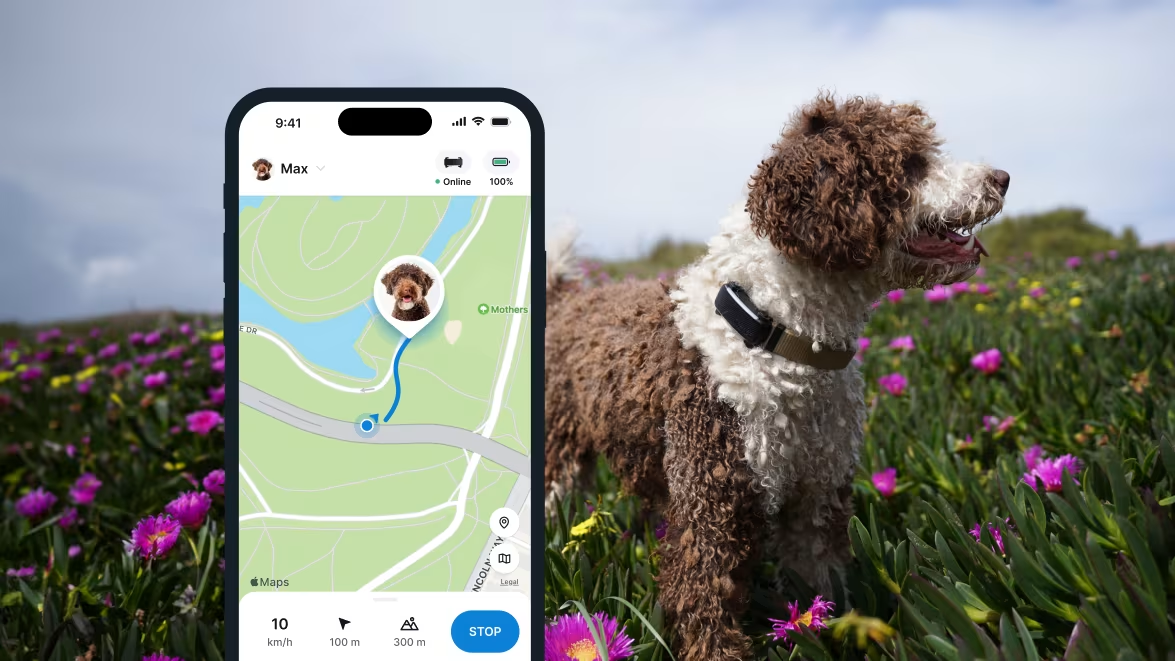
Because now, with just a glance at your phone, you can:
- See your puppy’s location live on your phone
Just switch to LIVE mode via your Tractive mobile app, so you always know where they are – even when they zigzag off the path. Plus, unlike AirTags, Tractive devices don’t need a network of compatible devices to work. - Catch on to an escape attempt early
Set up safe zones around your home or backyard – and get immediate escape alerts to your phone if your pup wanders outside the boundary. So you can intercept them before they go too far. - Set your puppy activity goals
With its built-in motion detector, your tracker also monitors how much exercise your puppy’s gotten. So you can check if they’ve gotten enough activity – or could do with one last game of fetch. - Figure out where your puppy spends most of their time
From their Heat Map and Location History. Discover your pup’s favorite spots and patterns of movement, create better play routines or identify what parts of your fence need fixing. Also, in an emergency – like if they’ve gone missing – you’ll also know where to look first.
With the Tractive GPS, you can focus on wearing out your energetic little buddy – while knowing exactly where they are at all times.
Remember: A tired puppy is a safe, happy puppy
Still wondering how to tire out a puppy? Start slow and pick a couple of these activities to get the ball rolling. Because at the end of the day, a tired puppy is a happy puppy – and you’re doing wonders to take an active role in their safety and wellbeing.
As always, make sure to get the green light from your vet regarding vaccinations and how soon is too soon to take your puppy outdoors. Till then, fill up your indoor space with toys, treats, and opportunities to teach your little buddy some new tricks. And from there, make sure to socialize your puppy with other people and pets to help them learn and grow.
And if you’ve found this post useful or know a fellow puppy parent, share it with them – and let’s help build a happier, healthier, safer world for our little buddies.
